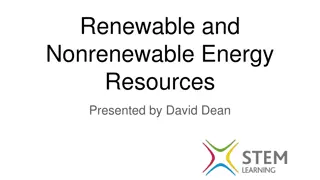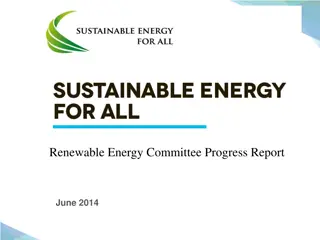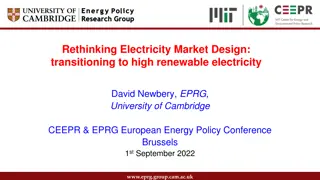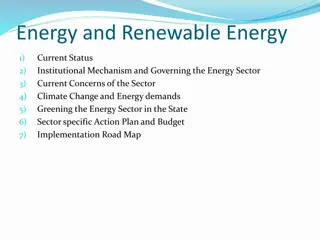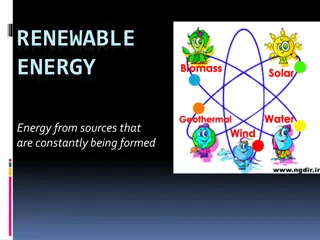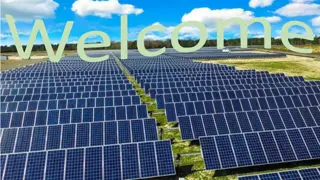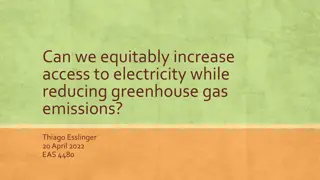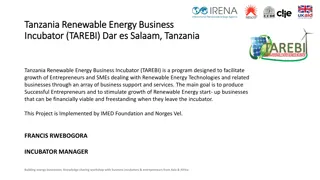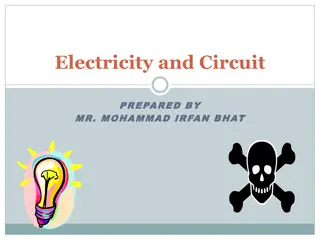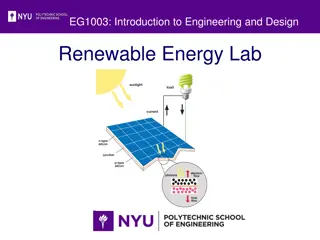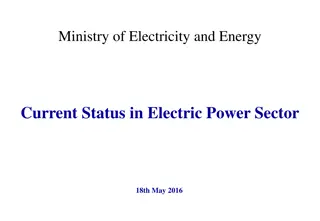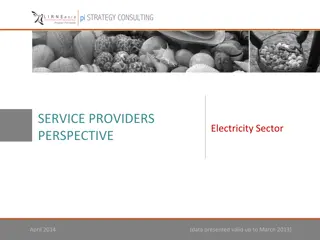Understanding Renewable Sources of Electricity and the Need for System Flexibility
This content provides an overview of renewable electricity sources, including variable renewables and other types, their characteristics, current shares in the system, and the importance of system changes and flexibility to accommodate varying energy outputs. It discusses the status, potential scale, costs, and limitations of different renewable technologies and highlights the need for solutions such as battery storage, flexible electricity usage, international resource sharing, and gas power plant backup.
Download Presentation

Please find below an Image/Link to download the presentation.
The content on the website is provided AS IS for your information and personal use only. It may not be sold, licensed, or shared on other websites without obtaining consent from the author. Download presentation by click this link. If you encounter any issues during the download, it is possible that the publisher has removed the file from their server.
E N D
Presentation Transcript
An understanding of renewable sources of electricity Mike Hemsley Committee on Climate Change
2 An overview of renewable electricity What we will cover: Technology types: variable renewables & other types of renewables Technology costs & potential scale System design
3 Low-carbon electricity options Characteristics Available some of the time Available all of the time Available when you need it Low-carbon technology Wind (onshore) Nuclear power Natural gas (with CCS) Wind (offshore) Bioenergy (with CCS) Hydrogen Solar Natural gas (with CCS) Wave Geothermal Tidal Hydro Current share of system (%) 26% 31% 43% (including high carbon gas and coal)
4 Variable renewables are the cheapest source of electricity Status Technology Potential scale Costs Onshore wind 10% of current electricity Limited by public acceptability Offshore wind 10% of current electricity No real limit Solar power 4% of current electricity Limited by when its output is useful Hydro power 2% of current electricity Limited by suitable sites Tidal power 0% of current electricity Limited by suitable sites Wave power 0% of current electricity
5 Other renewables can offer constant output, but have limited potential Technology Status Potential scale Costs Geothermal 0% of current electricity Limited potential in the UK. Bioenergy 14% of current electricity.
6 Why the system needs to change We need to produce the same amount of electricity as we're using at all times This becomes more difficult with variable renewable energy, as there may be times when its not windy or not sunny, or times when there is too much energy for the system to cope with.
7 Adding flexibility to the system Adding system flexibility can help: Battery storage can store electricity to use at a later time Changing when we use electricity (e.g. for electric vehicles), can move electricity consumption to a more useful time for the system Building electricity cables to other countries allows countries to share resources and solutions Gas power plants can respond to changes in output from renewables, and act as a backup source of generation.
8 An overview of renewable electricity What we covered: Technology types: variable renewables & other types of renewables Technology costs & potential scale System design
9 Conclusions Variable renewables are the cheapest source of electricity Wind and solar are currently the best options producing renewable electricity at scale System design needs to change in a low-carbon world






